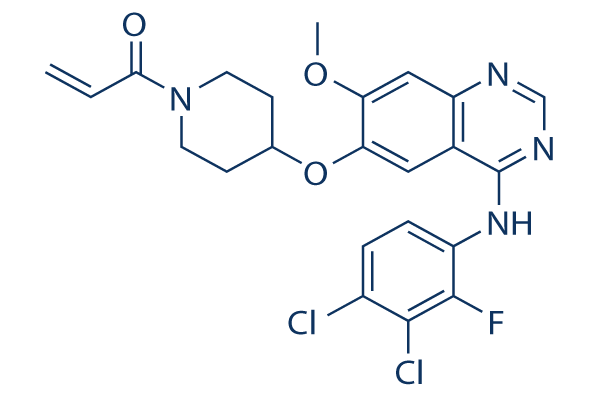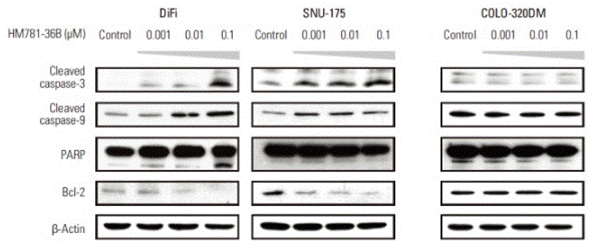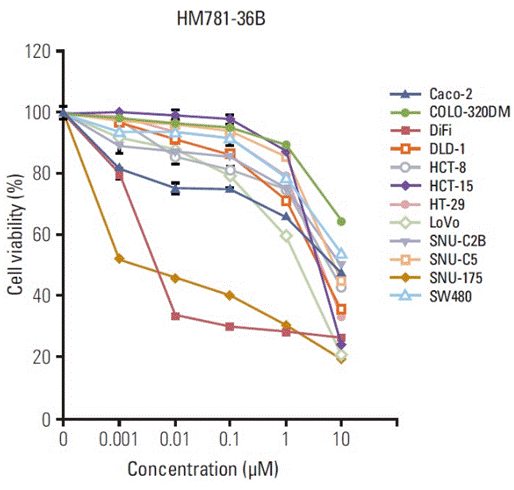
- Inhibitors
- By product type
- Natural Products
- Inducing Agents
- Peptides
- Antibiotics
- Antibody-drug Conjugates(ADC)
- PROTAC
- Hydrotropic Agents
- Dyes
- By Signaling Pathways
- PI3K/Akt/mTOR
- Epigenetics
- Methylation
- Immunology & Inflammation
- Protein Tyrosine Kinase
- Angiogenesis
- Apoptosis
- Autophagy
By research - Antibodies
- Compound Libraries
- Popular Compound Libraries
- Customize Library
- Clinical and FDA-approved Related
- Bioactive Compound Libraries
- Inhibitor Related
- Natural Product Related
- Metabolism Related
- Cell Death Related
- By Signaling Pathway
- By Disease
- Anti-infection and Antiviral Related
- Neuronal and Immunology Related
- Fragment and Covalent Related
- FDA-approved Drug Library
- FDA-approved & Passed Phase I Drug Library
- Preclinical/Clinical Compound Library
- Bioactive Compound Library-I
- Bioactive Compound Library-Ⅱ
- Kinase Inhibitor Library
- Express-Pick Library
- Natural Product Library
- Human Endogenous Metabolite Compound Library
- Alkaloid Compound LibraryNew
- Angiogenesis Related compound Library
- Anti-Aging Compound Library
- Anti-alzheimer Disease Compound Library
- Antibiotics compound Library
- Anti-cancer Compound Library
- Anti-cancer Compound Library-Ⅱ
- Anti-cancer Metabolism Compound Library
- Anti-Cardiovascular Disease Compound Library
- Anti-diabetic Compound Library
- Anti-infection Compound Library
- Antioxidant Compound Library
- Anti-parasitic Compound Library
- Antiviral Compound Library
- Apoptosis Compound Library
- Autophagy Compound Library
- Calcium Channel Blocker LibraryNew
- Cambridge Cancer Compound Library
- Carbohydrate Metabolism Compound LibraryNew
- Cell Cycle compound library
- CNS-Penetrant Compound Library
- Covalent Inhibitor Library
- Cytokine Inhibitor LibraryNew
- Cytoskeletal Signaling Pathway Compound Library
- DNA Damage/DNA Repair compound Library
- Drug-like Compound Library
- Endoplasmic Reticulum Stress Compound Library
- Epigenetics Compound Library
- Exosome Secretion Related Compound LibraryNew
- FDA-approved Anticancer Drug LibraryNew
- Ferroptosis Compound Library
- Flavonoid Compound Library
- Fragment Library
- Glutamine Metabolism Compound Library
- Glycolysis Compound Library
- GPCR Compound Library
- Gut Microbial Metabolite Library
- HIF-1 Signaling Pathway Compound Library
- Highly Selective Inhibitor Library
- Histone modification compound library
- HTS Library for Drug Discovery
- Human Hormone Related Compound LibraryNew
- Human Transcription Factor Compound LibraryNew
- Immunology/Inflammation Compound Library
- Inhibitor Library
- Ion Channel Ligand Library
- JAK/STAT compound library
- Lipid Metabolism Compound LibraryNew
- Macrocyclic Compound Library
- MAPK Inhibitor Library
- Medicine Food Homology Compound Library
- Metabolism Compound Library
- Methylation Compound Library
- Mouse Metabolite Compound LibraryNew
- Natural Organic Compound Library
- Neuronal Signaling Compound Library
- NF-κB Signaling Compound Library
- Nucleoside Analogue Library
- Obesity Compound Library
- Oxidative Stress Compound LibraryNew
- Plant Extract Library
- Phenotypic Screening Library
- PI3K/Akt Inhibitor Library
- Protease Inhibitor Library
- Protein-protein Interaction Inhibitor Library
- Pyroptosis Compound Library
- Small Molecule Immuno-Oncology Compound Library
- Mitochondria-Targeted Compound LibraryNew
- Stem Cell Differentiation Compound LibraryNew
- Stem Cell Signaling Compound Library
- Natural Phenol Compound LibraryNew
- Natural Terpenoid Compound LibraryNew
- TGF-beta/Smad compound library
- Traditional Chinese Medicine Library
- Tyrosine Kinase Inhibitor Library
- Ubiquitination Compound Library
-
Cherry Picking
You can personalize your library with chemicals from within Selleck's inventory. Build the right library for your research endeavors by choosing from compounds in all of our available libraries.
Please contact us at info@selleckchem.com to customize your library.
You could select:
- Bioreagents
- qPCR
- 2x SYBR Green qPCR Master Mix
- 2x SYBR Green qPCR Master Mix(Low ROX)
- 2x SYBR Green qPCR Master Mix(High ROX)
- Protein Assay
- Protein A/G Magnetic Beads for IP
- Anti-Flag magnetic beads
- Anti-Flag Affinity Gel
- Anti-Myc magnetic beads
- Anti-HA magnetic beads
- Poly DYKDDDDK Tag Peptide lyophilized powder
- Protease Inhibitor Cocktail
- Protease Inhibitor Cocktail (EDTA-Free, 100X in DMSO)
- Phosphatase Inhibitor Cocktail (2 Tubes, 100X)
- Cell Biology
- Cell Counting Kit-8 (CCK-8)
- Animal Experiment
- Mouse Direct PCR Kit (For Genotyping)
- Featured Products
- MRTX1133
- Nab-Paclitaxel
- KP-457
- IAG933
- RMC-6236 (Daraxonrasib)
- RMC-7977
- Zoldonrasib (RMC-9805)
- GsMTx4
- Navitoclax (ABT-263)
- TSA (Trichostatin A)
- Y-27632 Dihydrochloride
- SB431542
- SB202190
- MK-2206 Dihydrochloride
- LY294002
- Alisertib (MLN8237)
- XAV-939
- CHIR-99021 (Laduviglusib)
- Bafilomycin A1 (Baf-A1)
- Thiazovivin (TZV)
- CP-673451
- Verteporfin
- DAPT
- Galunisertib (LY2157299)
- MG132
- SBE-β-CD
- Tween 80
- Bavdegalutamide (ARV-110)
- Z-VAD-FMK
- Wnt-C59 (C59)
- IWR-1-endo
- (+)-JQ1
- 3-Deazaneplanocin A (DZNep) Hydrochloride
- RepSox (E-616452)
- Erastin
- Q-VD-Oph
- Puromycin Dihydrochloride
- Cycloheximide
- Telaglenastat (CB-839)
- A-83-01
- Ceralasertib (AZD6738)
- Liproxstatin-1
- Emricasan (IDN-6556)
- PMA (Phorbol 12-myristate 13-acetate)
- Dibutyryl cAMP (Bucladesine) sodium
- Nedisertib (M3814)
- PLX5622
- IKE (Imidazole Ketone Erastin)
- STM2457
- Saruparib (AZD5305)
- New Products
- Contact Us
research use only
Poziotinib (HM781-36B) EGFR inhibitor
Cat.No.S7358

Chemical Structure
Molecular Weight: 491.34
Quality Control
Batch:
Purity:
99.37%
99.37
Cell Culture, Treatment & Working Concentration
| Cell Lines | Assay Type | Concentration | Incubation Time | Formulation | Activity Description | PMID |
|---|---|---|---|---|---|---|
| A431 | Antiproliferative assay | 72 hrs | Antiproliferative activity against human A431 cells expressing wild type EGFR incubated for 72 hrs by MTS assay, IC50 = 0.0009 μM. | 28754471 | ||
| SKBR3 | Antiproliferative assay | 72 hrs | Antiproliferative activity against human SKBR3 cells expressing wild type HER2 incubated for 72 hrs by MTS assay, IC50 = 0.001 μM. | 28754471 | ||
| Ba/F3 | Function assay | Inhibition of human EGFR T790M/L858R mutant expressed in mouse Ba/F3 cells, IC50 = 0.0022 μM. | 28754471 | |||
| insect cells | Function assay | Inhibition of GST-tagged human EGFR catalytic domain expressed in insect cells, IC50 = 0.0032 μM. | 28754471 | |||
| Ba/F3 | Function assay | Inhibition of human EGFR T790M mutant expressed in mouse Ba/F3 cells, IC50 = 0.0042 μM. | 28754471 | |||
| insect cells | Function assay | Inhibition of GST-tagged human HER2 catalytic domain expressed in insect cells, IC50 = 0.0053 μM. | 28754471 | |||
| NCI-H1975 | Antiproliferative assay | 72 hrs | Antiproliferative activity against human NCI-H1975 cells expressing EGFR T790M/L858R mutant incubated for 72 hrs by MTS assay, IC50 = 0.0057 μM. | 28754471 | ||
| HS27 | Antiproliferative assay | 72 hrs | Antiproliferative activity against human HS27 cells expressing wild type HER2 incubated for 72 hrs by MTS assay, GI50 = 3.83 μM. | 28754471 | ||
| SKBR3 | Anticancer assay | 72 hrs | Anticancer activity against Erb-B2 overexpressing human SKBR3 cells assessed as cell growth inhibition after 72 hrs by SRB assay, ID50 = 0.0003 μM. | ChEMBL | ||
| A431 | Anticancer assay | 72 hrs | Anticancer activity against EGFR overexpressing human A431 cells assessed as cell growth inhibition after 72 hrs by SRB assay, ID50 = 0.0004 μM. | ChEMBL | ||
| Sf21 | Function assay | 10 mins | Inhibition of N-terminal GST-tagged human EGFR (696 to end residues) expressed in baculovirus infected Sf21 cells using poly (Glu,Tyr)4:1 as substrate preincubated for 10 mins followed by substrate addition measured after 1 hr by fluorescence polarization, IC50 = 0.0013 μM. | ChEMBL | ||
| NCI-H1975 | Anticancer assay | 48 hrs | Anticancer activity against human NCI-H1975 cells assessed as cell growth inhibition after 48 hrs by celltiter one shot solution assay, IC50 = 0.0027 μM. | ChEMBL | ||
| Sf21 | Function assay | 10 mins | Inhibition of N-terminal GST-tagged recombinant human EGFR T790M mutant expressed in baculovirus infected Sf21 cells using poly (Glu,Tyr)4:1 as substrate preincubated for 10 mins followed by substrate addition measured after 1 hr by fluorescence polarizat, IC50 = 0.0044 μM. | ChEMBL | ||
| Click to View More Cell Line Experimental Data | ||||||
Chemical Information, Storage & Stability
| Molecular Weight | 491.34 | Formula | C23H21Cl2FN4O3 |
Storage (From the date of receipt) | |
|---|---|---|---|---|---|
| CAS No. | 1092364-38-9 | Download SDF | Storage of Stock Solutions |
|
|
| Synonyms | HM781-36B, NOV120101 | Smiles | COC1=C(C=C2C(=C1)N=CN=C2NC3=C(C(=C(C=C3)Cl)Cl)F)OC4CCN(CC4)C(=O)C=C | ||
Solubility
|
In vitro |
DMSO
: 98 mg/mL
(199.45 mM)
Water : Insoluble Ethanol : Insoluble |
Molarity Calculator
|
In vivo |
|||||
In vivo Formulation Calculator (Clear solution)
Step 1: Enter information below (Recommended: An additional animal making an allowance for loss during the experiment)
mg/kg
g
μL
Step 2: Enter the in vivo formulation (This is only the calculator, not formulation. Please contact us first if there is no in vivo formulation at the solubility Section.)
%
DMSO
%
%
Tween 80
%
ddH2O
%
DMSO
+
%
Calculation results:
Working concentration: mg/ml;
Method for preparing DMSO master liquid: mg drug pre-dissolved in μL DMSO ( Master liquid concentration mg/mL, Please contact us first if the concentration exceeds the DMSO solubility of the batch of drug. )
Method for preparing in vivo formulation: Take μL DMSO master liquid, next addμL PEG300, mix and clarify, next addμL Tween 80, mix and clarify, next add μL ddH2O, mix and clarify.
Method for preparing in vivo formulation: Take μL DMSO master liquid, next add μL Corn oil, mix and clarify.
Note: 1. Please make sure the liquid is clear before adding the next solvent.
2. Be sure to add the solvent(s) in order. You must ensure that the solution obtained, in the previous addition, is a clear solution before proceeding to add the next solvent. Physical methods such
as vortex, ultrasound or hot water bath can be used to aid dissolving.
Mechanism of Action
| Targets/IC50/Ki | |
|---|---|
| In vitro |
Poziotinib specifically inhibits the cell growth in HER2 amplified gastric cancer cells, and inhibits the phosphorylation of EGFR and key components of downstream signaling cascades such as STAT3, AKT and ERK. This compound also induces apoptosis and G1 cell cycle arrest by activating the mitochondrial pathway in HER2 amplified gastric cancer cells. Furthermore, it also exerts synergistic effects with chemotherapeutic agents in both HER2 amplified and HER2 non-amplified gastric cancer cells. [1]
|
| Kinase Assay |
Enzyme activity assay
|
|
To determine the IC50 values of Poziotinib for kinase inhibition, enzymes of EGFR, HER2, and HER4 are expressed as recombinant proteins in Sf9 insect cells. Enzyme selectivity screening is then performed using a tyrosine kinase assay kit. Briefly, the reactions are performed in 96 well polystyrene round-bottomed plates containing kinase buffer composed of 100 mM HEPES (pH 7.4), 25 mM MgCl2, 10 mM MnCl2 and 250 μM Na3VO4. The reactions are initiated by the addition of 100 ng/assay enzyme, 100 μM ATP, and 10 ng/mL poly(Glu, Tyr). After 1 h of incubation at room temperature, the reactions are terminated by adding 6 mM EDTA solution and then anti-phosphotyrosine antibody, PTK Green Tracer, and FP dilution buffer mixtures. The fluorescence polarization values are then measured after 30 min at room temperature using a Victor3 microplate reader. Finally, the IC50 values were calculated using the following equation: Y = bottom + (top–bottom)/(1 + 10(X-logIC50)).
|
|
| In vivo |
In nude mice bearing N87 human gastric cancer xenografts, Poziotinib (0.5 mg/kg p.o.) alone significantly inhibits the growth of tumors, and coadministraion of this compound and 5-FU causes more effective tumor inhibition. [1] In addition, this compound shows excellent antitumor activity in a variety of EGFR- and HER-2-dependent tumor xenograft models, including erlotinib-sensitive HCC827 NSCLC cells, erlotinib-resistant NCI-H1975 NSCLC cells, HER-2 overexpressing Calu-3 NSCLC cells, NCI-N87 gastric cancer cells, SK-Ov3 ovarian cancer cells and EGFR-overexpressing A431 epidermoid carcinoma cancer cells. [2]
|
References |
Applications
| Methods | Biomarkers | Images | PMID |
|---|---|---|---|
| Western blot | Cleaved caspase-3 / Cleaved caspase-9 / PARP / Bcl-2 pEGFR / EGFR / pHER2 / HER2 / BMX / pERK / ERK / pAKT / AKT |

|
25761479 |
| Growth inhibition assay | Cell viability |

|
25761479 |
Clinical Trial Information
(data from https://clinicaltrials.gov, updated on 2024-05-22)
| NCT Number | Recruitment | Conditions | Sponsor/Collaborators | Start Date | Phases |
|---|---|---|---|---|---|
| NCT04436562 | Completed | Healthy |
Spectrum Pharmaceuticals Inc |
May 29 2020 | Phase 1 |
| NCT03804515 | Terminated | Solid Tumor |
Spectrum Pharmaceuticals Inc |
June 25 2019 | Phase 1 |
Tech Support
Tel: +1-832-582-8158 Ext:3
If you have any other enquiries, please leave a message.






































